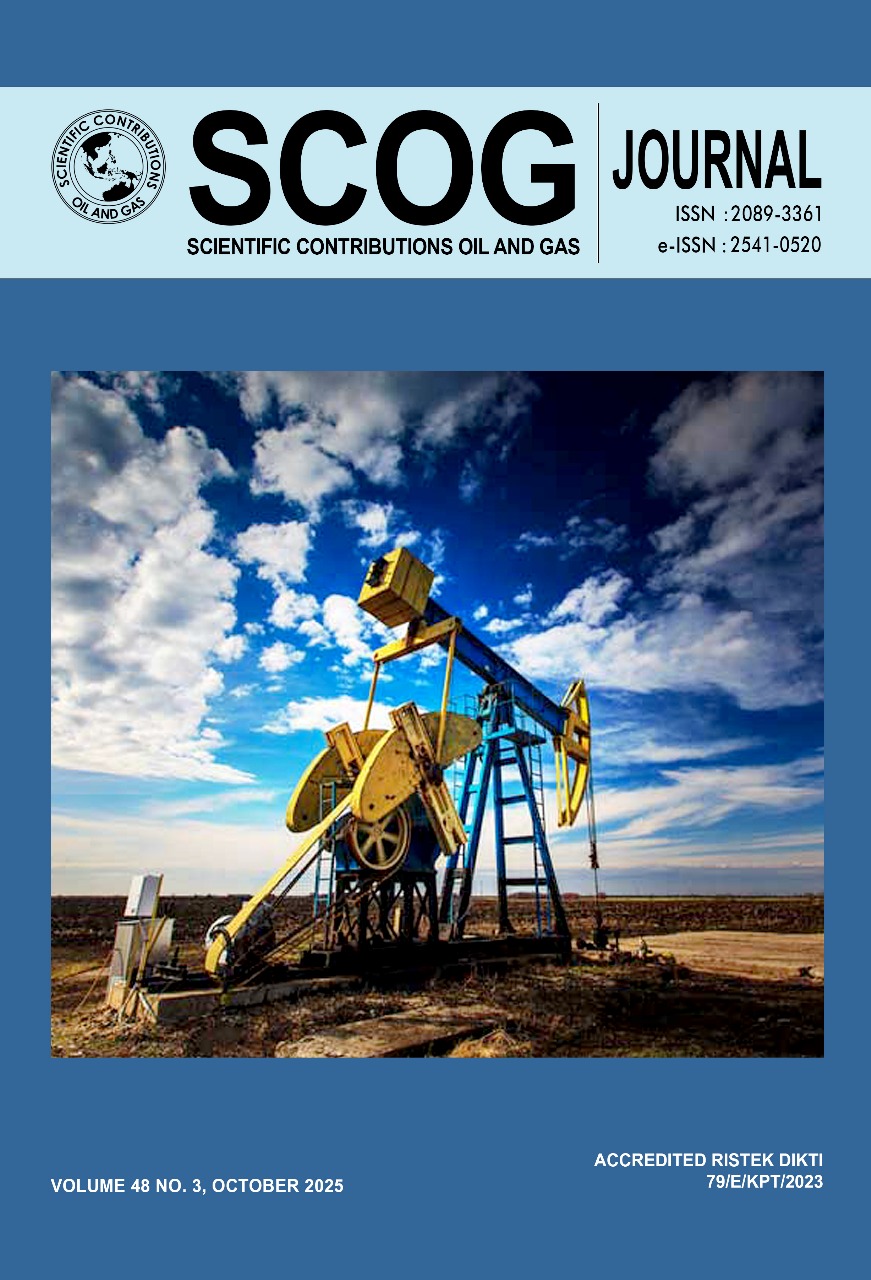Modern Palacio-Blasingame Type Curve Method to Determine Well Production Characteristics and Reserves in Indonesia Field
Keywords:
decline curve analysis, type curve, Palacio-Blasingame type curve, production characteristics, reservesAbstract
Well production characteristics and reserves are an important parameter to be known to maximize the production optimization and plan of further development. Usually, well production characteristics can be obtained from testing the well then flow rate versus time or cumulative production curve is plotted and extrapolated. This conventional decline curve method describes the production decline of well at a constant bottom hole flowing pressure and in boundary dominated flow period, which is not suitable for data analysis from the transient flow period. Also, it can be a time and cost consume if we apply this test to the giant field that has so many wells. Through this modern Palacio-Blasingame Type Curve Method, we can combine the available variable that is daily production data alongside the reservoir data that consider the production at variable bottom hole flowing pressure and the gas pressure-volume-temperature changing with reservoir pressure. Thus, we can obtain more advance and more accurate well production characteristics and reserves as well as save more valuable time and cost by applying this modern decline curve method compared to the conventional decline curve method.
References
Ahmed, T. (2018). Reservoir engineering handbook. Gulf professional publishing.
Agarwal, R. G., Al-Hussainy, R., & Ramey Jr, H. J. (1970). An investigation of wellbore storage and skin effect in unsteady liquid flow: I. Analytical treatment. Society of Petroleum Engineers Journal, 10(03), 279-290.
Anderson, D. M., & Mattar, L. (2003, June). Material-balance-time during linear and radial flow. In PETSOC Canadian International Petroleum Conference (pp. PETSOC-2003). PETSOC.
Anderson, D. M., Stotts, G. W. J., Mattar, L., Ilk, D., & Blasingame, T. A. (2006, September). Production data analysis—Challenges, pitfalls, diagnostics. In SPE Annual Technical Conference and Exhibition? (pp. SPE-102048). SPE.
Arps, J. J. (1945). Analysis of decline curves. Transactions of the AIME, 160(01), 228247.
Blasingame, T. A., & Lee, W. J. (1986, March). Properties of homogeneous reservoirs, naturally fractured reservoirs, and hydraulically fractured reservoirs from decline curve analysis. In SPE Permian Basin Oil and Gas Recovery Conference (pp. SPE-15018). SPE.
Blasingame, T. A., Johnston, J. L., & Lee, W. J. (1989, April). Type-curve analysis using the pressure integral method. In SPE Western Regional Meeting (pp. SPE-18799). SPE.
Blasingame, T. A., McCray, T. L., & Lee, W. J. (1991, January). Decline curve analysis for variable pressure drop/variable flowrate systems. In SPE Unconventional Resources Conference/Gas Technology Symposium (pp. SPE-21513). SPE.
Fetkovich, M. J. (1980). Decline Curve Analysis Using Type Curves. Journal of Petroleum Technology, 32(06), 1065-1077.
Ilk, D., Mattar, L., & Blasingame, T. A. (2007). Production data analysis—future practices for analysis and interpretation. paper CIM, 174.
Maurenza, F., Yasutra, A., & Tungkup, I. L. (2023). Production forecasting using Arps decline curve model with the effect of artificial lift installation. Scientific Contributions Oil and Gas, 46(1), 9-18.
Palacio, J. C., & Blasingame, T. A. (1993). Decline-curve analysis using type curvesanalysis of gas well production data. paper SPE, 25909, 12-14.
Sun, H. (2015). Advanced production decline analysis and application. Gulf professional publishing.
Taghavinejad, A., Ostadhassan, M., & Daneshfar, R. (2021). Unconventional reservoirs: rate and pressure transient analysis techniques: a reservoir engineering approach. Springer Nature.
Widarsono, M.P. (2013). Cadangan dan Produksi Gas Bumi Nasional: Sebuah Analisis atas Potensi dan Tantangannya. Lembaran Publikasi Minyak dan Gas Bumi vol. 47 no.3.
Published
Issue
Section
License

This work is licensed under a Creative Commons Attribution 4.0 International License.
Authors are free to Share — copy and redistribute the material in any medium or format for any purpose, even commercially Adapt — remix, transform, and build upon the material for any purpose, even commercially.
The licensor cannot revoke these freedoms as long as you follow the license terms, under the following terms Attribution — You must give appropriate credit , provide a link to the license, and indicate if changes were made . You may do so in any reasonable manner, but not in any way that suggests the licensor endorses you or your use.
No additional restrictions — You may not apply legal terms or technological measures that legally restrict others from doing anything the license permits.















